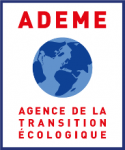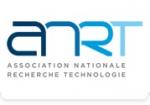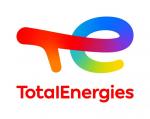Post-doc: Quantum chemical modelling of electrode/electrolyte interface for batteries
| ABG-133223 | Job | Any |
| 2025-08-27 | Fixed-term 24 Month | > €35,000 and < €45,000 annual gross |
- Energy
- Materials science
Employer
The Chemistry Laboratory is a joint unit overseen by the CNRS, the École Normale Supérieure de Lyon, and the University of Lyon 1. The laboratory addresses a wide variety of topics in chemistry and physical chemistry. The laboratory develops interdisciplinary research projects at the intersection of biology, materials science, and physics. Research topics cover a broad spectrum of experimental chemistry expertise (organic and inorganic) and modeling, combined with significant characterization resources. The laboratory's interdisciplinary projects partly address societal issues such as the environment, health, defense, and information and communication technologies.
The Theoretical Chemistry and Molecular Thermodynamics group benefits from the international recognition in the field of theoretical modeling of heterogeneous catalysis as well as processes at the solid/liquid interface in general. Students from all-over the world have been or are part of the team, where English is the main language of scientific discussions.
Website :
Position and assignments
By combining highly porous ceramic electrode materials and specific inorganic electrolytes, ITEN, a French DeepTech company, designs highly efficient and safe microbatteries. The Laboratoire de Chimie and the company ITEN have started working together in the framework of a “Laboratoire Commun” (LabCom), called AMIE, to understand and improve the working principle of these microbatteries and design the next generation of batteries. The AMIE LabCom gathers academic and private researchers in experimental and computational chemistry, material science, electrochemistry, and engineering. It aims at elucidating fundamental physico-chemical parameters into play in these batteries to propose improvements of cell components, i.e., electrode materials and electrolyte.
The objective of this post-doc is to conceive an atomistic model of the electrode/electrolyte interface in the batteries developed by ITEN, at the anode and at the cathode. Both electrodes are based on lithium-based transition metal oxides. The development of the model will rely on the available experimental characterizations of these interfaces and will focus on plausible solid-electrolyte interphase structures on the extreme surface. The applied computational methods will be periodic semi-empirical methods and density functional theory. These models will then be used to investigate the insertion mechanism of lithium ions and to understand the nature of the interaction between the material and the electrolyte. With these insights, alternative active material compositions could be proposed to improve lithium insertion or enhance the interaction with the electrolyte. Degradation mechanisms observed by ITEN (e.g., transition metal leaching) could also by investigated. These interface models and characteristics will then be transferred to other researchers for larger-scale modelling (molecular dynamics, finite element modelling of the battery…). The post-doc candidate will have the opportunity to collaborate with all the members of the LabCom.
Geographic mobility:
Telework
Starting date
Profile
The candidate must have a PhD in computational chemistry, ideally in material and/or surface science. Experience in modelling electrochemical phenomena will be strongly appreciated as well as skills in programming. As expected for a post-doc position, we look for a highly autonomous candidate able to work with people coming from different research fields.
Vous avez déjà un compte ?
Nouvel utilisateur ?
Get ABG’s monthly newsletters including news, job offers, grants & fellowships and a selection of relevant events…
Discover our members
 Institut Sup'biotech de Paris
Institut Sup'biotech de Paris  MabDesign
MabDesign  Ifremer
Ifremer  CESI
CESI  Groupe AFNOR - Association française de normalisation
Groupe AFNOR - Association française de normalisation  ADEME
ADEME  PhDOOC
PhDOOC  ASNR - Autorité de sûreté nucléaire et de radioprotection - Siège
ASNR - Autorité de sûreté nucléaire et de radioprotection - Siège  ANRT
ANRT  Laboratoire National de Métrologie et d'Essais - LNE
Laboratoire National de Métrologie et d'Essais - LNE  Tecknowmetrix
Tecknowmetrix  Aérocentre, Pôle d'excellence régional
Aérocentre, Pôle d'excellence régional  Généthon
Généthon  SUEZ
SUEZ  MabDesign
MabDesign  TotalEnergies
TotalEnergies  CASDEN
CASDEN  ONERA - The French Aerospace Lab
ONERA - The French Aerospace Lab  Nokia Bell Labs France
Nokia Bell Labs France
